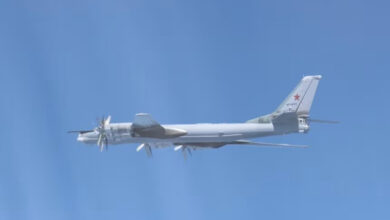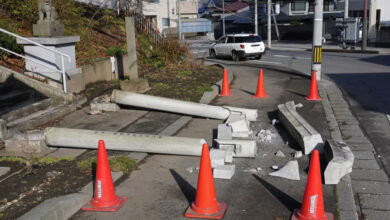Radiation readings around tanks holding contaminated water at the crippled Fukushima nuclear plant have spiked by more than a fifth to their highest levels, Japan’s nuclear regulator said, heightening concerns about the clean-up of the worst atomic disaster in almost three decades.
Radiation hotspots have spread to three holding areas for hundreds of hastily built tanks storing water contaminated by being flushed over three reactors that melted down at the Fukushima Daiichi plant in March 2011.
The rising radiation levels and leaks at the plant have prompted international alarm, and the Japanese government said on Tuesday it would step in with almost $500 million of funding to fix the growing levels of contaminated water at the plant.
Readings just above the ground near a set of tanks at the plant showed radiation as high as 2,200 millisieverts (mSv), the Nuclear Regulation Authority (NRA) said on Wednesday. The previous high in areas holding the tanks was the 1,800 mSv recorded on Saturday.
Both levels would be enough to kill an unprotected person within hours. The NRA has said the recently discovered hotspots are highly concentrated and easily shielded.
The tanks sit on a hill above the Pacific Ocean at the Fukushima plant, which was devastated by a massive earthquake and tsunami in March 2011, triggering the worst nuclear crisis since Chernobyl a quarter of a century earlier.
‘Too little, too late’
The plant operator, Tokyo Electric Power Co, or Tepco, said last month water from one the tanks was leaking. Another small leak was found later and the rising number of areas of concentrated radiation are raising concerns of further leaks.
The NRA later raised the severity of the initial leak from a level 1 “anomaly” to a level 3 “serious incident” on an international scale of 1-7 for radiation releases.
“There’s a strong possibility these tanks also leaked, or had leaked previously,” said Hiroaki Koide, Assistant Professor at Kyoto University Research Reactor Institute. “We have to worry about the impact on nearby groundwater…These tanks are not sturdy and have been a problem since they were constructed two years ago.”
It’s also possible the radiation readings are increasing because of more frequent monitoring and inspections by Tepco employees, indicating the hotspots and leaks have been there for some time, Koide said.
“The government has finally said they will be involved in this problem but they are still not going to be fully involved in the decommission,” he said. “It is too little, too late.”
Uranium rod meltdowns
The disaster created fuel-rod meltdowns at three reactors, radioactive contamination of the air, sea and food and resulted in the evacuation of 160,000 people in the area, north of Tokyo.
The peak release of radiation in the sea around Fukushima came about a month after the earthquake and tsunami. Ocean currents have since dispersed the plume and sent the diluted radiation in a slow drift towards the West Coast of the United States, studies have shown. The amount of radiation expected to reach Canadian and U.S. coastal waters in the years ahead is projected to be well within safety limits for drinking water as it will have been greatly diluted.
The closest towns to the stricken plant remain deserted and off-limits to the public, although some former residents have started to return to their homes, some of which are less than 20 kms away, as decontamination work progresses.
Tepco is storing enough contaminated water to fill more than 130 Olympic-sized swimming pools. The water becomes contaminated as it is flushed over the melted uranium fuel rods to keep them cool. The government has ordered Tepco to transfer all the water held in around 310 weaker, bolted tanks to more reliable welded tanks at the Fukushima site. Tepco said there are around 620 welded tanks, but these take longer to build, and an NRA official has said some of these, too, might not be safe as they are lined up on the ground rather than on a concrete foundation.
Japan’s biggest utility has been criticised for a series of mishaps including its admission, after repeated denials, that contaminated water was flowing into the Pacific from another area of the plant. That was followed by the leaks from above-ground tanks.
The latest radiation readings at the plant were taken on Tuesday and were not related to a 6.9 magnitude earthquake off southern Japan earlier on Wednesday.




